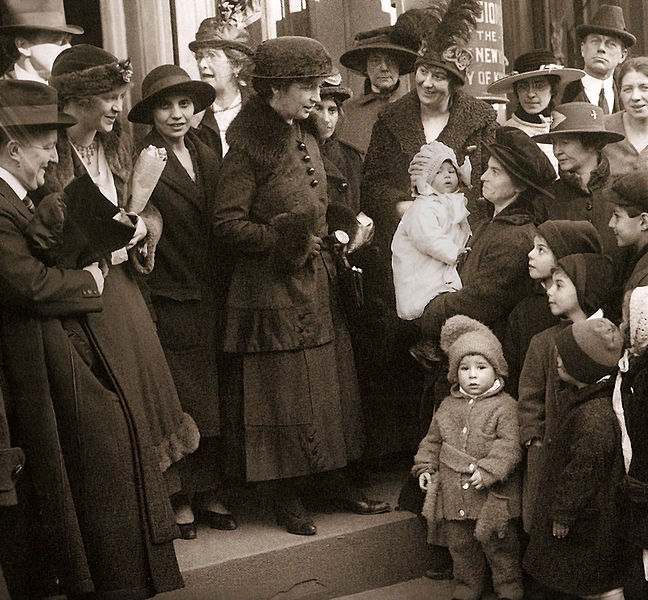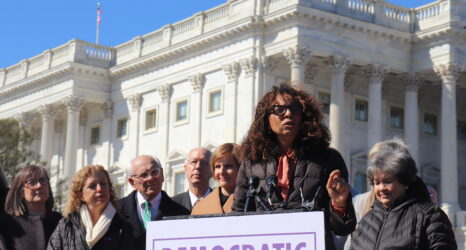Born in 1905 in Zanesville, Ohio, Cornelia Smith began her church career as Director of Christian Education for the Episcopal Diocese of Southern Ohio. In 1933, she married the Reverend Elwood Haines, who was later elected Bishop of Iowa. In the decades following his death, she rose to national leadership in the Protestant Episcopal Church.
And in the 1920’s, when my mother was a graduate student at Union Theological Seminary and Columbia University’s Teachers’ College, she marched with Planned Parenthood founder Margaret Sanger to demand that all women gain access to contraception.

Cornelia had a long and successful career as a “church lady.” She traveled the country training laity and clergy, which included leadership training and conducting prayer and Bible study sessions at churches across America. She was a member of the Society of Companions of Holy Cross and served as a docent at Washington’s National Cathedral for over 20 years. But during a time when the ordination of female clergy was just beginning to see broader acceptance, my mother also defined her ministry through a lifelong commitment to women’s rights. She eventually returned to New York to join the staff of the National Episcopal Church’s Department of Social Relations as secretary of its Division of Women’s Work, and while organized religious groups continually rallied against Planned Parenthood, she championed the organization.
Margaret Higgins Sanger herself was born in 1879, to an Irish immigrant family in Corning, New York. Her mother had 18 pregnancies in 22 years, seven of which ended in miscarriages. Sanger was convinced that her mother’s poor health and early death resulted from these repeated pregnancies, and watching her mother endure helped her recognize that the inability to control reproduction was linked to poverty.
Sanger knew that family planning was the only way women could control their physical and emotional health and determine their own futures—so she studied birth control methods in Europe and became an obstetric nurse. Eventually, she opened a women’s health clinic in New York City’s impoverished Lower East Side, where patients continually asked her how to prevent pregnancy. In 1914, she published “Family Limitation,” a document providing information about birth control methods, for which she was promptly prosecuted under the federal Comstock Act that criminalized contraception.
Sanger was arrested again that same year for the same offense after putting copies of her magazine, “The Woman Rebel,” in the mail. Volunteer supporters ultimately delivered the magazine themselves because the U.S. Postal Office refused to do so. (The June issue that year made a bold declaration: “A woman’s body belongs to herself alone,” it read. “It does not belong to the church. It does not belong to a United States of America. The first step towards getting life, liberty and the pursuit of happiness for any woman is her decision whether or not she shall become a mother. Enforced motherhood is the most complete denial of a woman’s right to life and liberty.'”)
None of the legal ramifications Sanger faced deterred her from her mission. Remaining defiant in her cause, she released another book, “What Every Young Girl Should Know,” and opened the country’s first birth control clinic in Brooklyn with her sister in October of 1916. Police raided it nine days later, arresting the Sanger sisters and a third woman, who was a nurse.
Sanger refused to pay the fine imposed upon her for her “crimes” and spent 30 days in jail. Her trial, which saw numerous appeals, dragged on for over two years—until a judge finally agreed to allow physicians to prescribe methods of contraception. The resulting publicity garnered wide public support for Sanger, and in 1921 she founded the American Birth Control League. (The name would change to Planned Parenthood Federation of America in 1942.)
Over 50 years later, abortion would become the legal right of women across the U.S. But in the 46 years since Roe v. Wade was decided by the Supreme Court, Planned Parenthood has also seen a renewed slew of political attacks reminiscent of those on Sanger’s earliest trailblazings. More than 1,200 anti-abortion statutes put in place by state governments across the country, and federal policies restricting abortion access and federal funding for healthcare providers, have put Planned Parenthood on the chopping block time and time again. Between 2011 and 2014, Ohio, Michigan and Texas lost one-third of Planned Parenthood clinics. Kentucky, Mississippi and Missouri now have only one standing.
Nearly 90 years since its founding, Planned Parenthood now operates 600 clinics in the U.S. and has some 12 million supporters. And decades after Cornelia Smith Haines rallied at Margaret Sanger’s side, her 25-year-old granddaughter was employed at Planned Parenthood in Syracuse, New York. Like her grandmother, Susan was committed to providing the educational support services, health care and reproductive rights that have always been available through the organization—even if it meant she had to brave barricades of angry anti-choice advocates simply to get to work. Cars filled with jeering anti-choice protesters often followed her home. Threatening phone calls forced her to change her number several times. Police had to be summoned one morning after a chemical bomb had been planted in the office.
Like her grandmother, Susan considers choice a fundamental human right. And like Margaret Sanger herself, this prominent “church lady” has been a lifelong champion of Planned Parenthood who firmly believed that “the first right of every child is to be desired, the second right is that a child be conceived in love and the third, that it have a heritage of sound health.”





